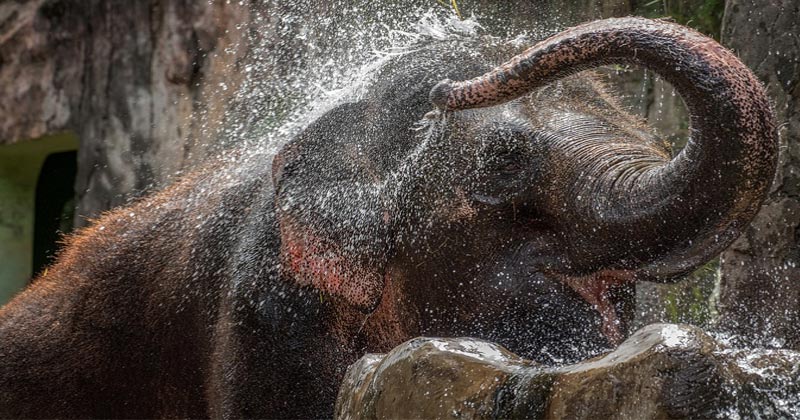Summer heat not only makes people suffer but animals also feel the heat. But instead of sweating, turning on the air conditioning, and licking tons of ice, they have developed their own peculiar strategies against the hot temperatures. Whether it is a built-in heat sink, cooling cosmetic treatments, or sophisticated cuddle tricks, nature is impressively imaginative when it comes to heat protection. Let’s see how animals keep themselves cool in the soaring summer heat.
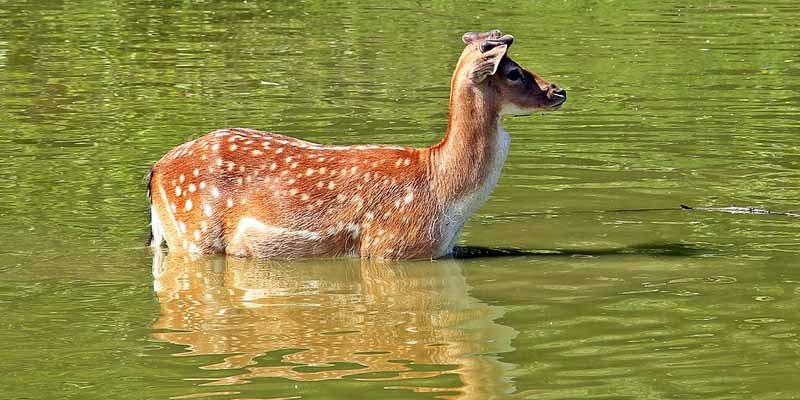
On hot days, our body needs cooling and one thing it does best, is sweat, sweat, sweat. The pores of the skin expand, water drips out and evaporates with a cooling effect. To survive the high temperatures unscathed and relaxed, all that’s missing is enough drinks and a shady spot.
Dogs Use Their Tongue – How Animals Keep Themselves Cool in Summers
But animals keep themselves cool in the heat? Few of them can sweat like us including primates and horses. However, other species have developed their strategies to stay cool on hot days.
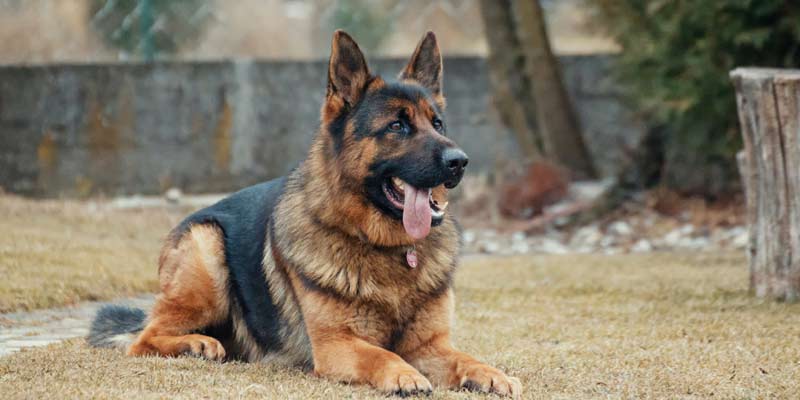
For example, our best friend, the dog, pants when it gets too warm. His number of breaths increase tenfold from about 30 to 300 per minute. The liquid then evaporates on the tongue and carries away the body heat. Foxes and some bird species also use this cooling trick in the heat.
Elephants – Ears as Heat Dissipators
In other animals, however, the ears act as effective heat dissipators. This is the reason why elephants living in the heat of the Indian forests and African savannah have particularly large ears. When they get hot, they pump as much blood as possible into their ears. They cool off the blood in the air by waving it. The chilled blood flows back into the body and the elephant is no longer quite as warm.

The donkey living in the hot semi-deserts of northern Mexico also uses this trick. It doesn’t wag his thirteen centimeters long ears. Nevertheless, the blood in the thin, barely hairy parts of the body cool down comparatively quickly. Even the cows use the same tactic.
Giant Toucan Bird Uses Its Beak – How Birds Keep Themselves Cool in Summers
The giant toucan bird from South America has developed a similar principle. Its cooling system is in the beak, which makes up a third of its entire body surface. Scientists have used thermal imaging cameras to reveal the ingenious secret of his giant mouthpiece.
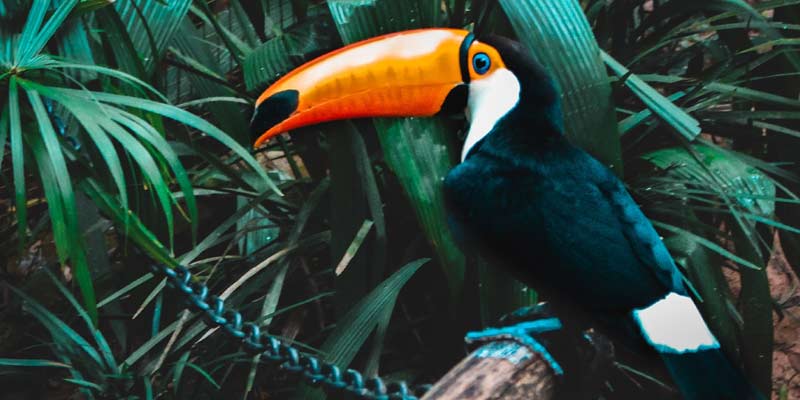
When it gets cooler in the evening, the bird dissipates excess heat through the beak to the environment. It can get rid of over ten degrees in just ten minutes.
African Cape Ground Squirrel Uses The Shadow of Its Tail
The African Cape ground squirrel does not have a heat sink, but it always has its umbrella with it. Its bushy tail is so big that it is as good as a shade. In strong sunlight, the rodents just put their tails upright, tip a little and the shady spot is done.
Suggested Read: Do Animals get an early Warning about Earthquakes?
Many Animals Use The Cooling Mud Pack
Special adjustments are undoubtedly an excellent strategy to deal with hot temperatures. But what if panting, waving your ears and tail don’t achieve the desired effect? Then other things have to remedy the situation, like a cooling mud pack.
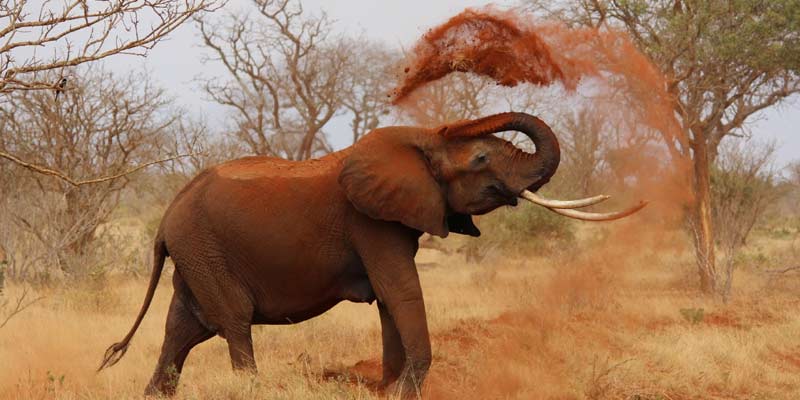
Many wild animals such as red deer or wild boar look for muddy pits in summer and wallow in them. The animals sitting in the sludge not only cool down but the brown mask also keeps annoying insects away and protects the skin from drying out. Storks, on the other hand, prefer a variant of the cooling mask that is somewhat less appetizing for human terms. They smear their legs with their liquid droppings. The white layer acts as sun protection and cools like the sludge.
Koala Uses Tree Hug Instead of Air Conditioning
The heat trick that koalas use is particularly cute. They cuddle with trees to cool off. The strains of some species are almost nine degrees cooler than the surrounding air. If the thermometer climbs above 30 degrees Celsius, koalas climb down from the eucalyptus trees and look for the proximity of the much more pleasantly tempered acacias. Then they closely hug these natural air conditioning systems.
Bees Stay Away From Their Children to Keep Them Cool
It is a great example of parenting when bees protect their brood from overheating. The adult bees hang in a dense cluster in front of the flight hole. The phenomenon is known as the so-called beehive and the reason for this is simple. If you are not inside the beehive, you will not produce any heat there. The offspring is therefore cooler.
Heat Tricks in The Water
Animals living in the water are best off in the heat, you might think. But the supposedly cool water can also reach uncomfortable temperatures when the sun is shining. So how do fish and other water animals survive the heat? The strategy for many fish is simple. They simply dive into deeper areas where it is significantly cooler. But for some species like the zebrafish, it is not enough. To protect itself from harmful UV radiation, this species also produces its own sunscreen, a chemical compound called Gadusol.
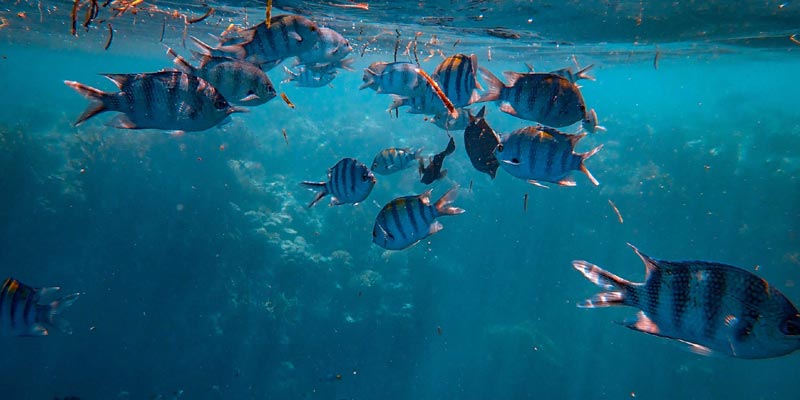
Starfish are particularly sensitive to heat. Temperatures above 36 degrees Celsius are horrible for them. Their trick, on the other hand, is that they conduct the heat away from the center of the body into their less sensitive arms. In extreme cases, however, these extremities are also damaged by the high temperatures and must then be thrown off. But, as you know already, the starfish quickly grow new arms again.
Suggested Read: Why Don’t Birds Tip Over In Their Sleep?
So, you see how animals keep themselves cool in the soaring summer heat. We are not insinuating that you use your droppings on your feet or start panting but Nature gives us many tricks to keep ourselves cool in the heat. Yet, we use the air conditioners instead of planting more trees that will keep us from soaring temperatures for a lifetime and will be great for nature as well.


